Zvartnots site - World cultural heritage in Armenia
The United Nations Scientific, Educational and Cultural Organization has recognized Armenia's Zavartnots Ruins as a World Cultural Heritage in 2000.
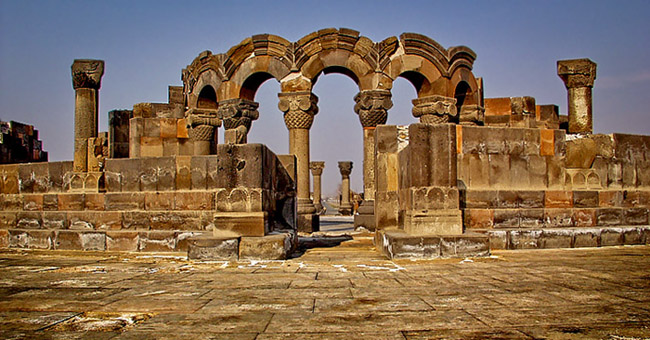
Zvartnots in Armenian means heavenly angels . This is a city in Armenia's Armavir province. The city is about 10 km west of Yarevan, in the middle of the road from Echmiadzin to Yarevan.
Zvartnots is well known for its archaeological site of the cathedral of Zvartnots, which was recognized by the Unesco Scientific, Educational and Cultural Organization as a World Cultural Heritage in 2000.
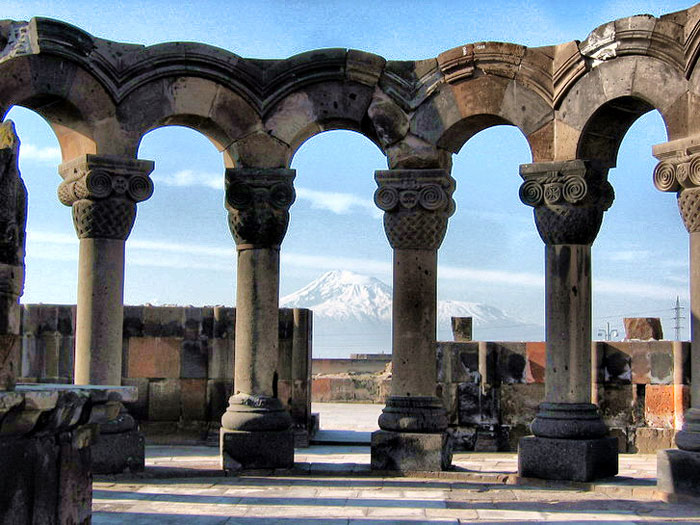
The cathedral of Zvartnots was built in a circular form, from 643 to 652 in the 7th century. The site of the church is the site of the meeting between St. Gregory and King Trdat III . This church was built with the purpose to dedicate to St. George.
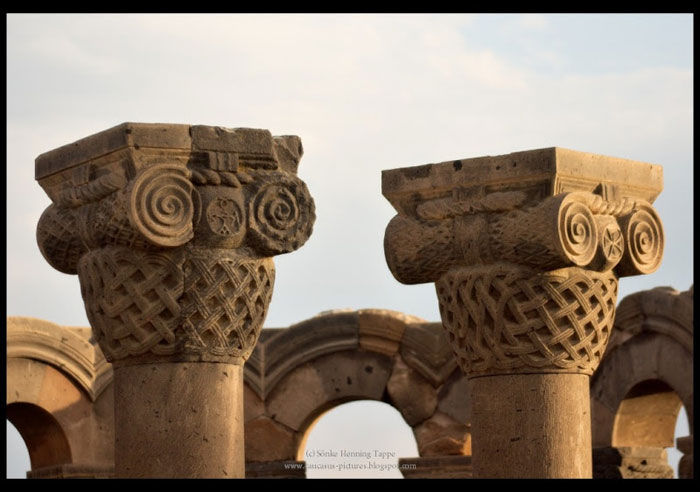
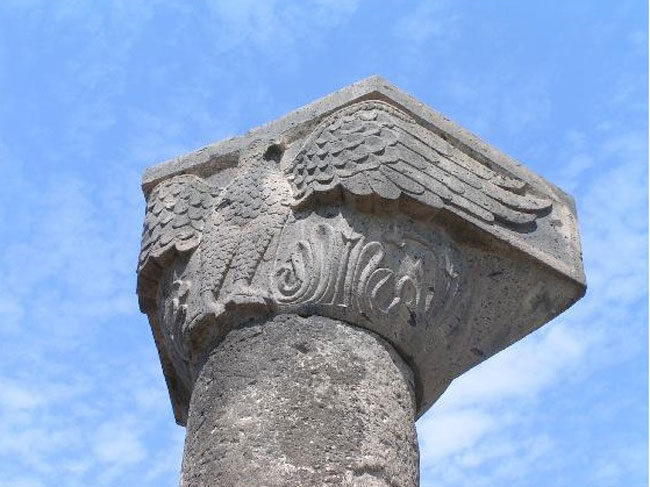
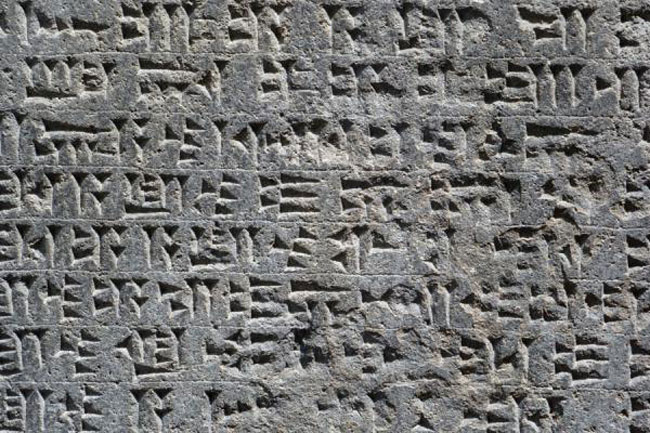
The intricate carvings are carved on the stone pillars and walls of the remaining Zvartnots church at the Zvartnots site.
The construction of the church was started by Catholicos Nerses III , but the period of time in which he was incomplete was that the church had to wait until after renouncing the Catholicossal throne to complete the construction of the temple with the Secondary architecture around the church. Zvartnots is not only a typical Armenian architecture but also has a great influence on the architecture of many churches in Armernia the following centuries.
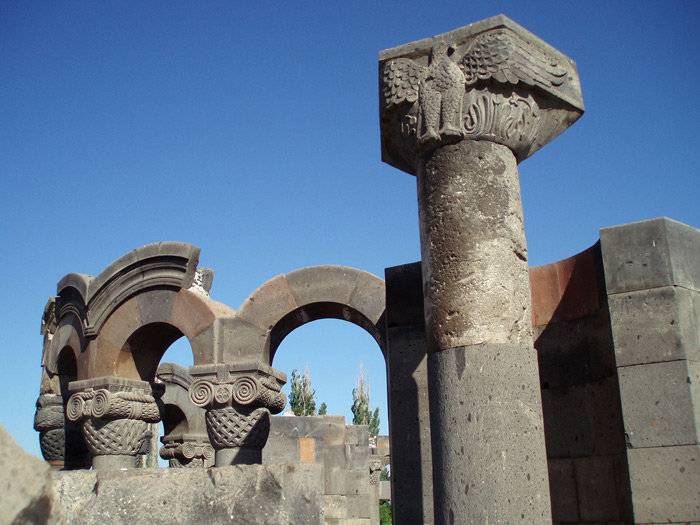
The remaining ruins at the site Zvartnots, Armenia
In 930 the Zvartnots Church was destroyed by an earthquake, the ruins of the church buried in the ground for hundreds of years until the beginning of the 20th century were discovered by archaeologists. The excavation of this site was carried out from 1900 to 1907. Through the excavation process, the foundation of the church was discovered as well as the ruins of the Patriarchal Palace and a wine factory formerly in the mold. tablets of Zvartnots.
If the architecture outside the church attracts viewers with elaborate sculptures, the interior of the house is decorated with Greek fresco pictures with 3 wings. While the outer trim is a 32-sided polygon, it looks like a circle from a distance.

Architect Toros Toramanian (1864 - 1934), who spent many years studying this Zvartnots site, suggested that this ancient church had 3 floors. And after much controversy, scholars have so far accepted Toros Toramanian's opinion.
Along with Echmiadzin main church, St Gayane Church, St Hripsime Church, Zvartnots archaeological site was included in the list of Unesco's World Cultural Heritage in 2000 in the 24th session of the Unesco council.
In Armenia's 100 dram banknote in the first release period, there is a picture of the Zvartnots cathedral. So far this form of banknotes has been displayed at the historic museum in Yerevan and is an artifact that gives much attention to international visitors. At the same time, this relic area is also being allowed by the Government to visit tourists.
- Haghpat Monastery
- Sanahin Monastery - World Cultural Heritage in Armenia
- Kernavé archaeological site - World cultural heritage in Lithuania
- Cultural landscape of Bam - World Cultural Heritage in Iran
- Ban Chiang archaeological site
- Gyeongju historical site
- Geghard Monastery and Azat Valley
- Archaeological site Epidaurus
- Sammallahdenmaki Bronze Age archaeological site in Lappi
- Archaeological site of Lenggong valley
- Archaeological site Fuerte de Samaipata
- Archaeological site on Mount Camel
 Suzhou classic bonsai garden - China
Suzhou classic bonsai garden - China Chau Nguyen Dynasty
Chau Nguyen Dynasty Thai Son Mountain - World Wonder
Thai Son Mountain - World Wonder Ancient villages of Shirakawa-go and Gokayama
Ancient villages of Shirakawa-go and Gokayama